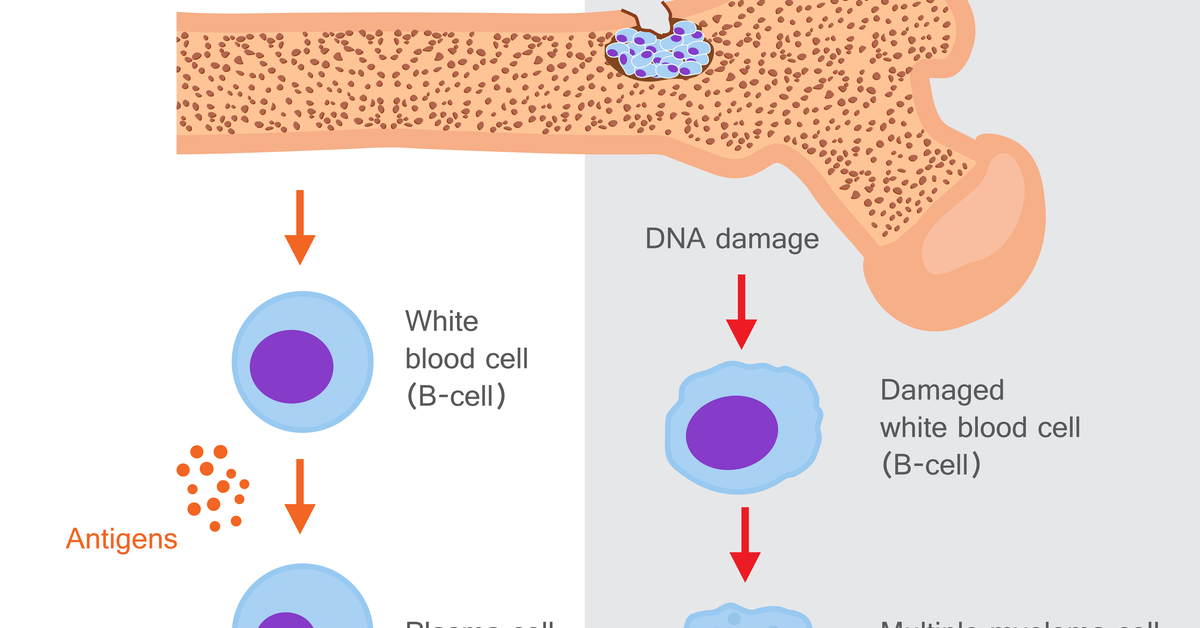Myeloma is a blood cancer that arises from plasma cells. These cells are a type of WBC (White Blood Cells) made in the bone marrow and are part of the immune system. All blood cells including red blood cells (RBCs) and white blood cells (WBCs) are formed in the spongy material found in the center of the long bones in the body. The plasma cells produce different types of antibodies to fight disease and infections.
Myeloma develops when the plasma cells become abnormal. These abnormal plasma cells multiply and spread within the bone marrow. These cells also produce a large number of single types of antibody, which does not have any function. Myeloma can develop in regions where plasma cells are present. So, it can be found in regions where there is bone marrow. Since it can be present in more than one place in the body, it is often called as multiple myeloma.

Symptoms of Myeloma
In the early stage, myeloma may not show any kind of symptoms, but as the disease progresses, it develops a wide range of problems. Blood and urine tests are done for the diagnosis of the disease. Following are the symptoms of myeloma:
Anemia symptom
Myeloma can affect the production of blood cells in the bone marrow. This may lead to a lack of RBCs. And anemia makes a person feel very tired, weak and breathless.
Repeated Infections symptom
People with myeloma are vulnerable to infection because the infection is directly associated with the immune system. The body’s natural defense against the infection weakens due to the production of the non-functional antibody.
Thickened blood
People with myeloma cause the blood to become thicker than the normal blood. This may be due to excess production of proteins that myeloma cells often produce.
Bone Pain symptom
Myeloma can use pain in the bone affected with myeloma. These bones may include the back, ribs, and hips. The pain is frequent and persistent and may become worse by movement.
Treatment of Myeloma
Treatment for myeloma can help control symptoms and improve quality of life. However, myeloma cannot be cured. The medicines for myeloma treatment include chemotherapy, a steroid medicine, and thalidomide.
Chemotherapy
Chemotherapy is done to kill myeloma cells. A number of treatments are combined to treat myeloma. These treatments are often taken in the form of pills.
Steroids
Corticosteroids are often used to destroy myeloma cells in combination with chemotherapy. Steroids are taken by mouth after the meal.
Thalidomide
Thalidomide can help kill myeloma cells. This is taken in the form of tablets every day, usually in the evening.
Stem Cell Transplant
Chemotherapy is used to destroy myeloma cells, but the high dose of chemotherapy also affects healthy bone marrow. That’s why stem cell treatment is given to allow bone-marrow to recover.
Besides, the treatments mentioned above, clinical trials and research are going on to find new treatments for myeloma. Besides, doctors are working out on how to improve the use of the existing treatment methods for effective results.